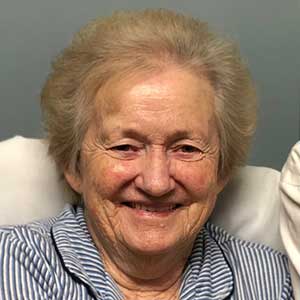Evie Rome
- Author: Evie Rome


“ In just four days, the burning stopped. I wouldn’t have been able to walk without that procedure”
After falling at church, Evelie Rome knew something was wrong. As the pain got worse over the next days and weeks, she also knew something had to be done.
“Everything in my body hurt,” said the 81-year-old Vacherie, Louisiana, resident. “It burned like fire.”
Rome needed a thoracic fusion to help manage a fracture in her back, a complicated procedure in which several rods and screws are inserted into the spine to help stabilize it and reduce the chronic pain. She was referred to Dr. Christopher Maulucci with the Tulane Neuroscience Center, who had good news for her – not only would the procedure help ease her pain, it would also be the first in the region to use a revolutionary new robotic navigation system that provides minimally invasive surgical options for several complex spinal, orthopedic and neurological conditions.
Tulane Health System is the first hospital in the New Orleans area to offer the ExcelsiusGPS™ system, which provides surgeons with enhanced, real-time visualizations of a patient’s anatomy to help improve the accuracy of procedures. Rome was the first patient to receive the benefit of the technology, with a successful surgery late last month.
“It helped a lot,” she said. “In just four days, the burning stopped. I wouldn’t have been able to walk without that procedure”.
The robotic system’s improved optics allows for minimally invasive procedures, which often result in less blood loss, less muscle damage and a potentially faster recovery when compared to traditional surgeries.
“Prior to this technology, we depended on X-rays, which don’t provide us the same degree of accuracy we have now,” said Dr. Maulucci, the Tulane Neuroscience Center’s director of spinal surgery and robotics. “With the robot, we see exactly where the screws are going as we insert them, so we can make minor adjustments to match each patient’s unique anatomy.
“Simply put, this helps us place the perfect screw, every time.”
This new technology will especially benefit people who need a lumbar, thoracic or cervical spinal fusion, Dr. Maulucci said, as well as anyone who has endured degenerative disc disease or traumatic spinal injuries. It can also help people with spinal instability due to scoliosis, spondylolisthesis, fractures and other conditions.
“We are so satisfied with this procedure and so glad we decided to have it done,” said Rome, who is now undergoing rehabilitation to further strengthen her repaired back. “I don’t know what I would have done otherwise.”